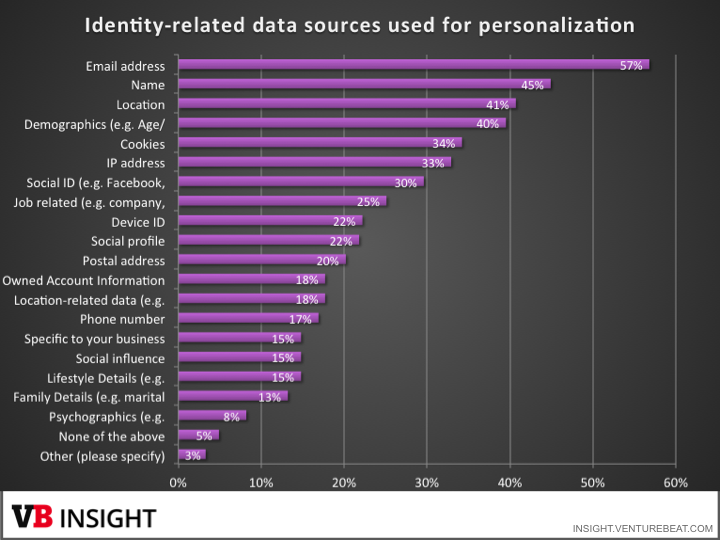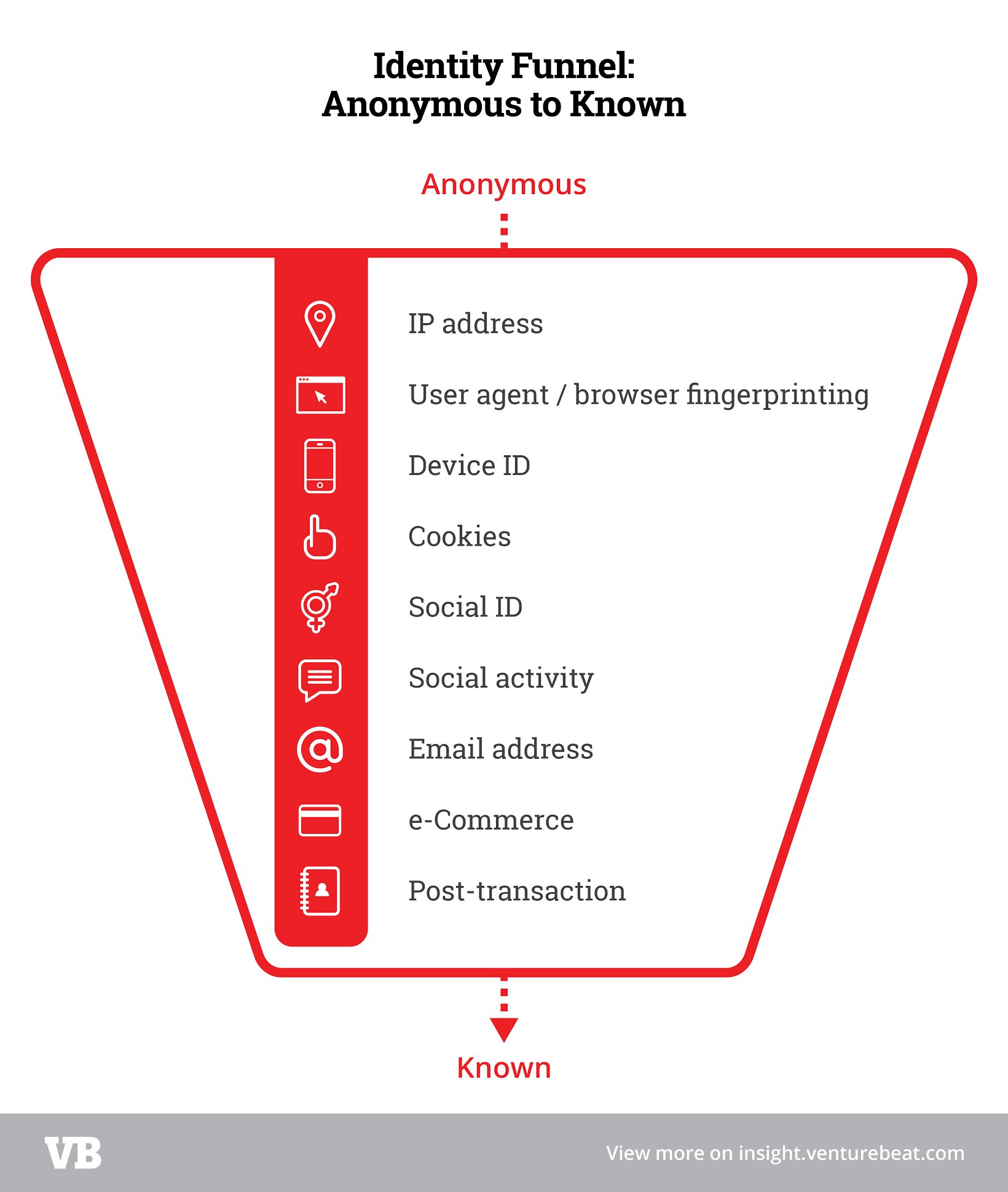Want smarter insights in your inbox? Sign up for our weekly newsletters to get only what matters to enterprise AI, data, and security leaders. Subscribe Now
Marketing today, we are told, is about personalization.
It is about me knowing you at a deep level, and conversing with you as an individual, even though you may be one of a million in a customer database.
But there’s a problem.
Knowing who each customer is and what she cares about is a major challenge.
In a new report launched today — “Identity and marketing: Capturing, unifying, and using customer data to drive revenue growth” — we discover that this challenge has two main components, and both of these are proving difficult for marketers.
 “The first element is data collection,” Andrew Jones, an analyst at VB Insight and author of the report, told me. “This is all about picking up the digital breadcrumbs from each customer interaction.”
“The first element is data collection,” Andrew Jones, an analyst at VB Insight and author of the report, told me. “This is all about picking up the digital breadcrumbs from each customer interaction.”
The study — which takes in data and survey responses from 506 marketers and 27 vendors — tells us that 80 percent of consumer-facing companies simply don’t understand their customers beyond basic demographics and purchase history. While demographics might get you to a segment of possibly like-minded people, it doesn’t get you the deep knowledge you need for true personalization.
The other component?
“That is data unification,” Jones said. “This is where you tie together customer details from various databases.”
And how are marketers doing with data unification? Terribly.
Ninety-six percent of marketers say that building a comprehensive single view of customers is a challenge.
In addition to these two components, marketers also need to worry about channels when attempting to personalize marketing.
“Just as employing personalization is different on each channel, customer identity is scattered across different channels,” Jones said. “I was researching personalization, but identity is just as important a topic and the flip side of the same coin.”
Jones found in his study that there is a fundamental issue in the way companies approach personalization.
“Although we may think of the sales process and learning about customers as top-down, most companies implement personalization with a bottom-up approach,” Jones said. “That is, most companies begin their personalization efforts based on known prospects or customers.”
That is because the bottom of the funnel — the point after which the prospect has become a customer, or as close to that point as possible — is where businesses have the most data points.
Jones’ report, however, highlights the problem of this approach succinctly.
“Targeting known consumers only excludes an awfully large percentage of an audience that could be converted more effectively,” Jones said. “Most prospects are anonymous, after all.”
The study makes it clear how big a problem this is for marketers.
In B2C organizations, 95 to 98 percent of visitors don’t log into the ecommerce platform until they’re ready to purchase. On the B2B side, prospects typically go through 57 to 90 percent of the buying process before the seller knows who they are.
These results are at odds with what marketers want from using personalization in marketing.
“Marketers themselves told us that the top objective for using personalization is to reach more prospects,” Jones said.
The very people who are, by and large, anonymous.
Fortunately, there is a marketing technology light at the end of the tunnel. More than ever before, tools to help identify prospects earlier in the buying process are becoming available, each of which the report goes into in some depth.
“Marketers have a variety of tools available to them to manage and consolidate customer data,” Jones said. “Depending on what channels they’re focused most on, those tools are as diverse as Tag Management Systems (TMS), Customer Data Hubs, Customer Identity Management, Customer Profile Management, and Data Management Platforms (DMPs).”
The study — which explains why customer identity is more critical than ever, details key tools for capturing customer data, offers options for customer profile enrichment, covers technologies to unify customer data, and provides technology recommendations — is available today from VB Insight.



